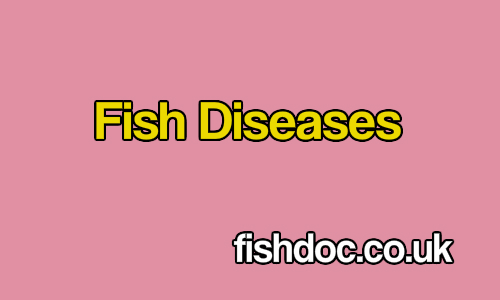Fish disease is a fact of life and in common with all pet owners, fish-keepers need to be able to recognize the signs of ill-health in their fishy charges. These pages give a comprehensive view of common diseases including typical signs of disease and how to systematically diagnosis both health problems and their causes.
explains why disease occurs. It explains the various diagnostic steps to take and outlines the various treatment methods.
an invaluable step by step guide to diagnosis health problems and their causes.
Although it is impossible to make a diagnosis based purely on behaviour we can use typical behaviour and physical changes as indicators of possible health problems.
The fish louse. A real nasty. In the confines of a pond or tank these can be real killers and finding even one louse warrants immediate treatment.
including fin rot and ulcers are a serious threat to health.
is usually a ‘management’ problem, arising from less than ideal conditions.
a common parasite, often occurring at low temperatures. It is a threat as it often causes severe damage before any signs are evident.
is able to reproduce rapidly under ideal conditions and cause serious tissue damage, particularly in the gills.
a quite horrifying condition that leaves koi covered in angry-looking lesions – but then disappears literally overnight!
With few exceptions, fin rot is always precipitated by stress and is often one of the first signs that a health problem exists.
are common parasites that are often the precursor to gill damage, bacterial infections and ulcers. Treatment can sometimes be tricky.
Saprolegnia infections can spread rapidly and even though the damage is often superficial, prompt treatment is essential to avoid fatalities.
Fish are potential hosts to a range of parasites. While small numbers of parasites do little harm in most cases, in large numbers they can seriously compromise the health of the fish
a common parasite. At low levels it doesn’t pose a health problem. However, as with most parasites they have tremendous reproductive potential.
are a common problem. An early, accurate diagnosis and treatment is vital if losses and expensive treatment costs are to be avoided.
a nasty parasite capable of causing serious tissue damage. Up to 100% fatalities can occur without prompt treatment.
I should stress, that although these diseases sound daunting, most are easily cured if treated early enough.
The key is observing behaviour. Any changes from normal behaviour that persist for more than a day or two must be investigated – as it usually indicates something is wrong.
However It is important to understand that a definite diagnosis can’t be made purely on the basis of the behaviour changes – a proper examination is usually required.

